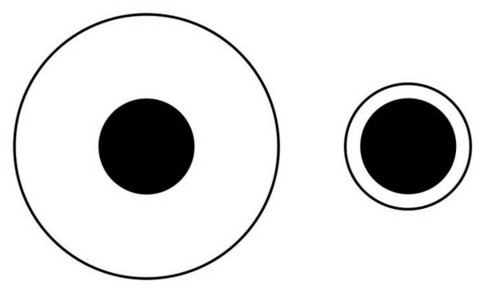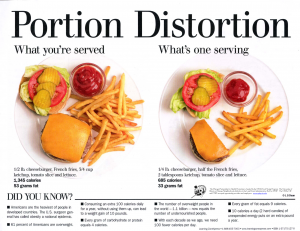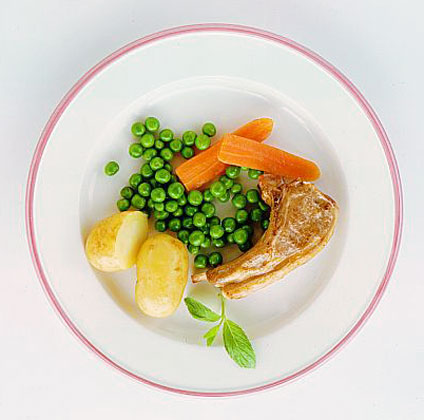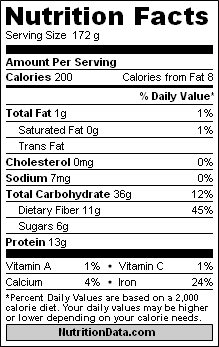Back in the 1800s, the Delboeuf illusion was discovered. When you look at concentric circles (i.e., a circle within a circle), the perceived size of the inner circle changes when the size of the outer circle is changed. If you apply the principle of this illusion to food, people tend to underestimate portions on bigger plates and overestimate portions on smaller plates. For this reason, you’ve probably heard people recommend smaller plates to help facilitate weight loss.
But it doesn’t end there.
 As it turns out, color is important, too. A few years back, researchers expanded on this idea by exploring the impact of plate color. What they found was pretty amazing. When there was a high color contrast between plate color and food (for example, pasta with red sauce on a white plate), participants served themselves less. When there was a low color contrast between plate color and food (for example, pasta with Alfredo sauce on a white plate), participants served themselves 22% more.
As it turns out, color is important, too. A few years back, researchers expanded on this idea by exploring the impact of plate color. What they found was pretty amazing. When there was a high color contrast between plate color and food (for example, pasta with red sauce on a white plate), participants served themselves less. When there was a low color contrast between plate color and food (for example, pasta with Alfredo sauce on a white plate), participants served themselves 22% more.
Twenty-two percent is a staggering number, especially when you consider the repeated impact of meal after meal over time. It’s a lot of calories.
Being aware of the illusion should be enough to overcome it, right? No. Even after participants were made aware of the illusion, the outcomes were still the same. So rather than resisting the Delboeuf illusion, embrace it! If you want to eat less, use a small plate that differs in color from your food. If you want more veggies, serve those veggies on a green plate.
Of course, when it comes to diet and nutrition, plate size and color is just one variable of many. Download Davey Wavey’s Insanely Easy Guide to Eating Smarter for a simple, foolproof guide to transforming the way you look and feel through the foods you eat.











 Deciding whether a food product is healthy can feel overwhelming. Fortunately, nutrition labels make things easier and give you an even playing field. You just need to know what to look for.
Deciding whether a food product is healthy can feel overwhelming. Fortunately, nutrition labels make things easier and give you an even playing field. You just need to know what to look for.

